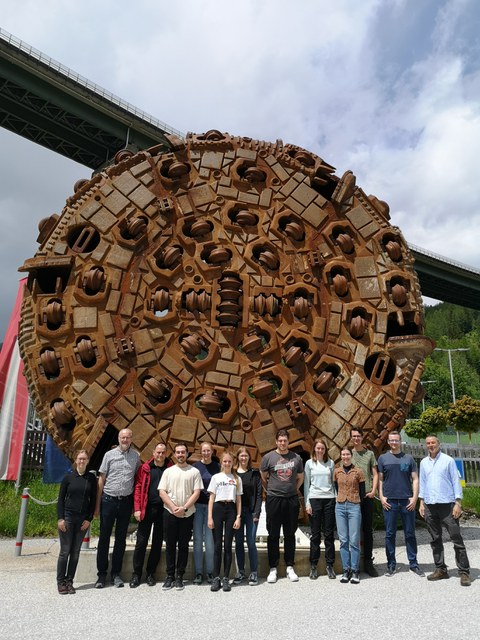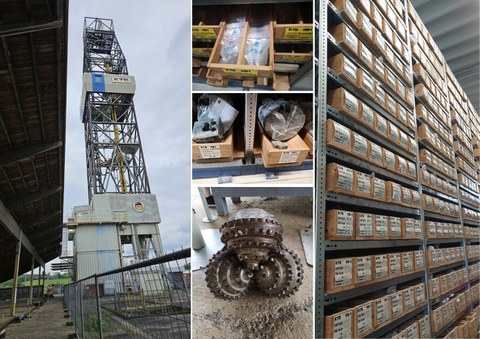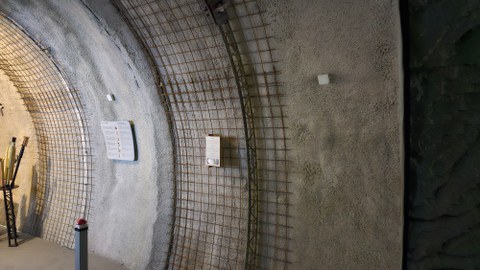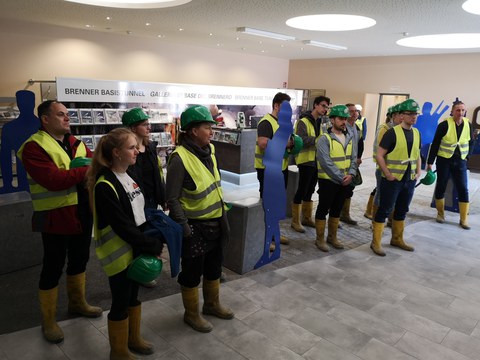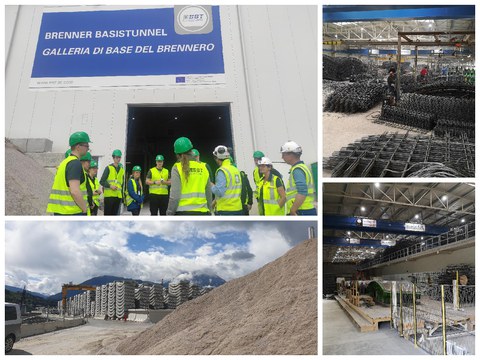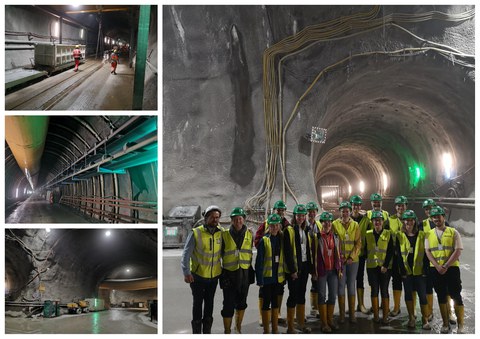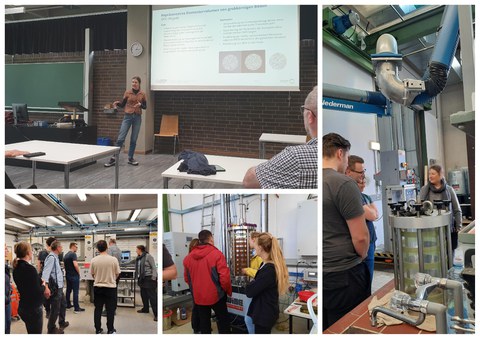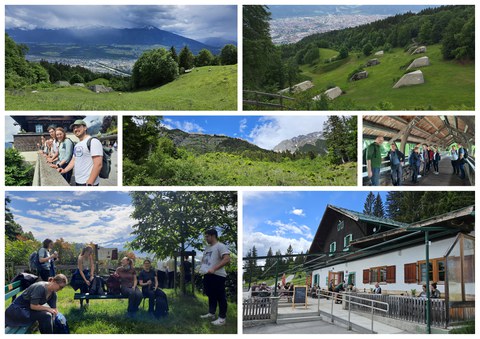Field trip 2024 - Innsbruck
The main destination of the geotechnical field trip in May 2024 was the Brenner Base Tunnel in Austria. Staff from the Institute of Geotechnical Engineering traveled to Innsbruck with four students.
On the way to Innsbruck, a first stop was made in Windischeschenbach at the geocenter of the Continental Deep Borehole (KTB). At 9101 m, the borehole at the KTB is the deepest borehole in Germany and one of the deepest in the world. This borehole was used to gain insights into the earth's crust. In addition to visiting the drilling rig, we were also able to take a look at the drill core archive, where all the drill cores and rock samples from the KTB are stored.
On the second day, we visited the construction site of the Brenner Base Tunnel in Innsbruck. The Brenner Base Tunnel will be 64 km long from the Tulfes portal to the Franzensfeste portal. It will consist of two separate tunnel tubes and an exploratory tunnel. It is part of the TEN-T Scandinavia-Mediterranean corridor and an elementary infrastructure project for crossing the Alps. It thus contributes to connecting the economic centers in the north and south of Europe. The tunnel will be excavated using drill and blast and tunnel boring machines.
Our first stop was the Tunnelwelten Steinach. In the visitor center, we were able to get an initial overview of the construction project. We were shown a modell of the tunnel wall for blasting and tunnel boring. A film presented the construction project and various exhibits brought the topic of tunnel construction closer.
After changing clothes and a final safety briefing, we went to the construction site.
In construction lot H41 Sillschlucht-Pfons, we visited the on-site precast concrete plant for the production of the segments, the prefabricated concrete segments used to reinforce the tunnel. We were able to see the storage areas, the production of the reinforcement cages and the concreting process up close.
After visiting the segment plant, we went via the Ahrental access tunnel to the main tunnel. This runs north of Innsbruck to the south of Pfons. Approx. 5.7 km of this will be built using conventional construction methods and approx. 16.4 km using tunnel boring machines. This construction lot also includes the interior construction of the main tunnel, the Innsbruck emergency stop and the exploratory tunnel. We visited both the main tunnel and the exploratory tunnel and were able to get a closer look at tunnel construction.
After the tour of the Brenner Base Tunnel, we visited the Institute of Geotechnical Engineering at the University of Innsbruck. In addition to a tour of the laboratory, there was an exchange and discussion about current research projects.
The excursion ended with a geotechnical hike to the Arzler Alm, where Prof. Kolymbas led us on a tour of avalanche barriers on endangered slopes.
The Institute of Geotechnical Engineering would like to thank Prof. Schneider-Muntau and Prof. Kolymbas as well as BBT Tunnelwelten for the interesting insights and the scientific exchange.

